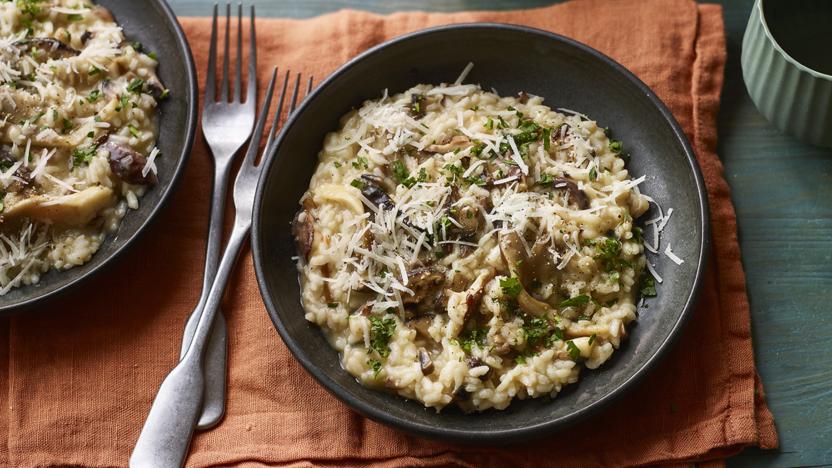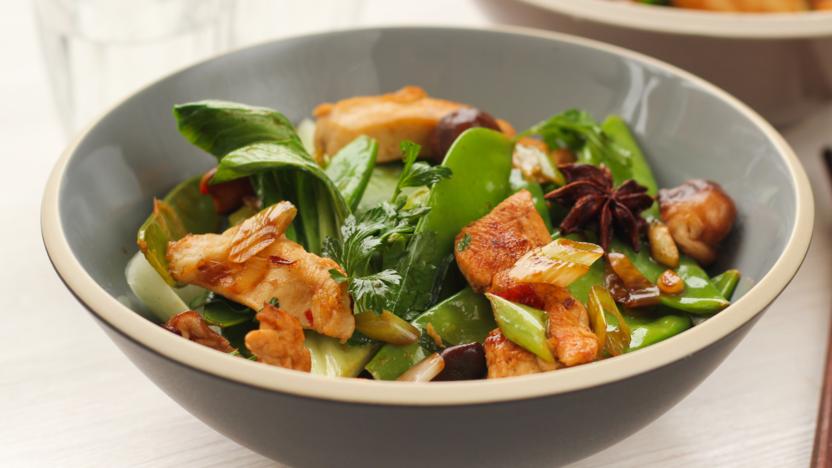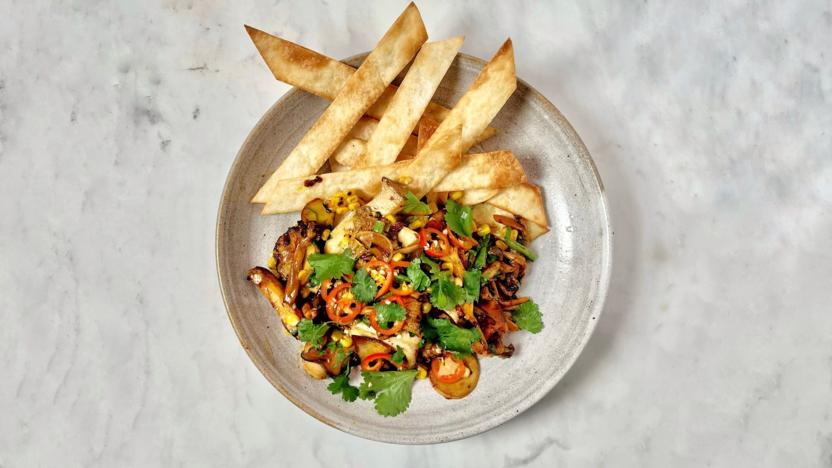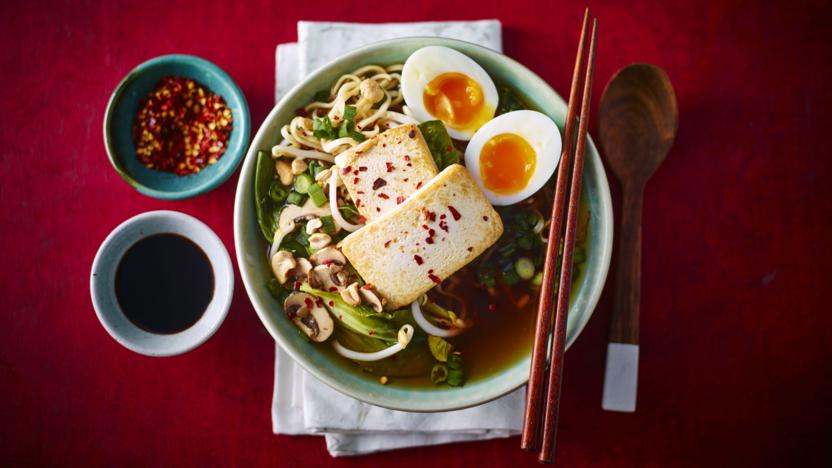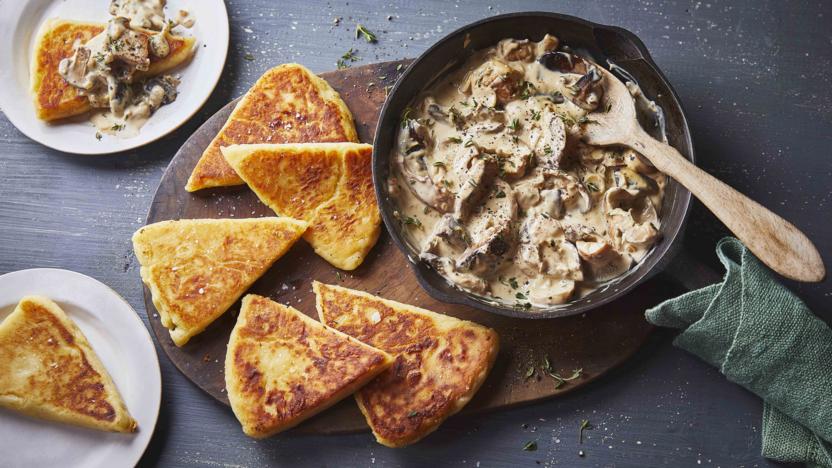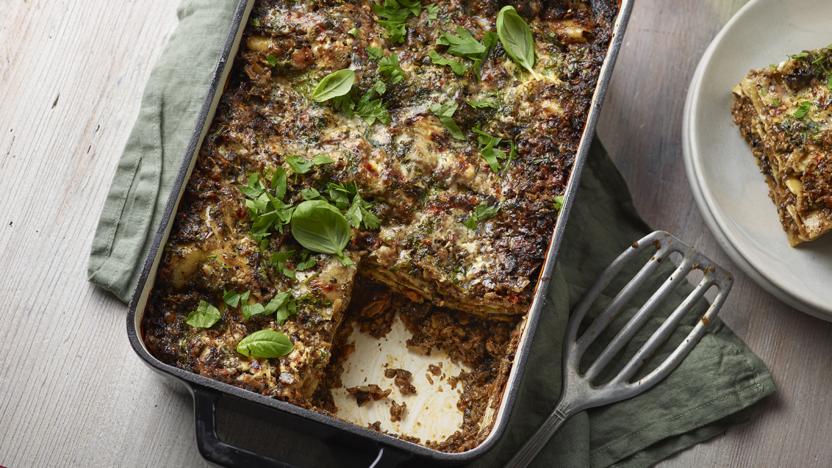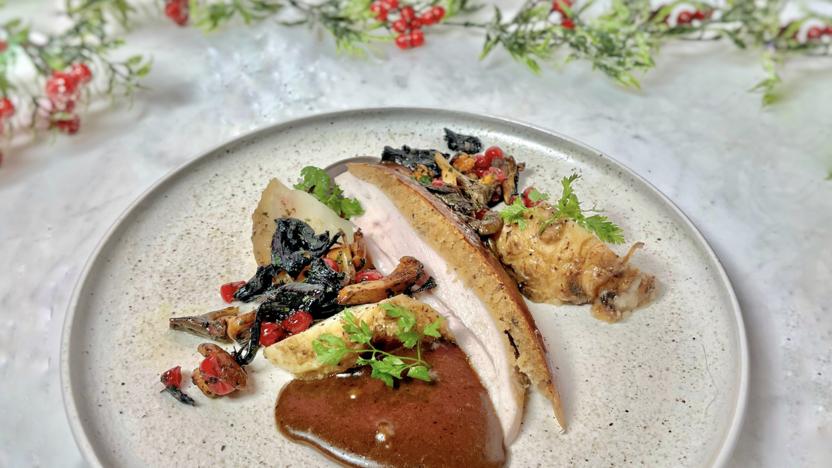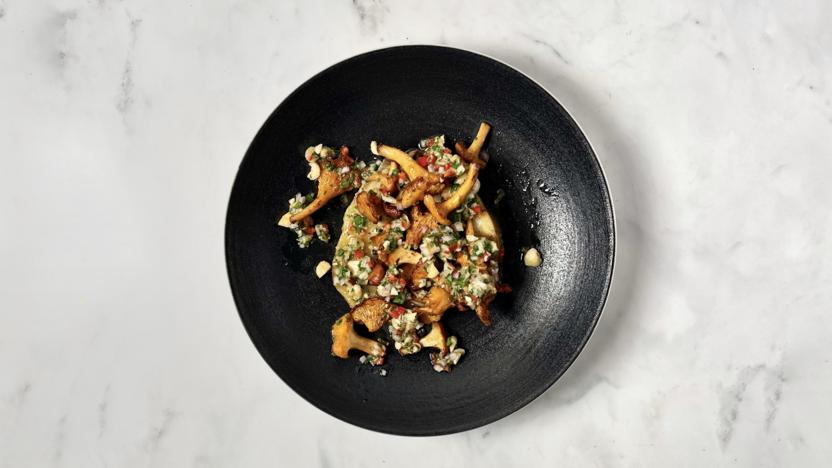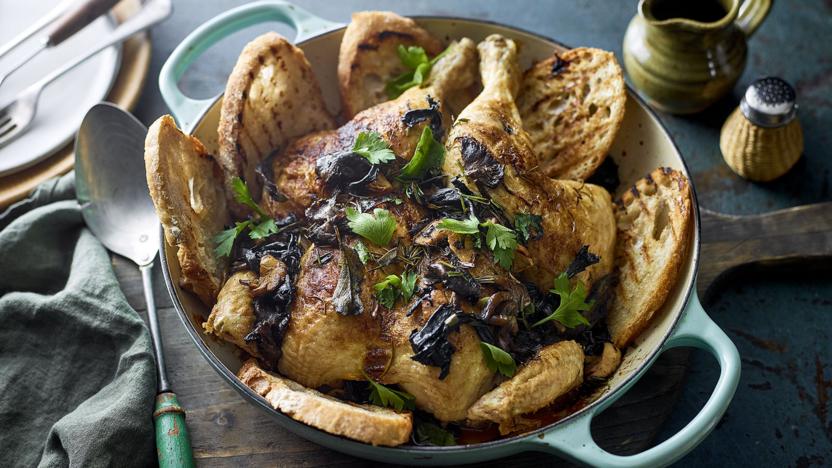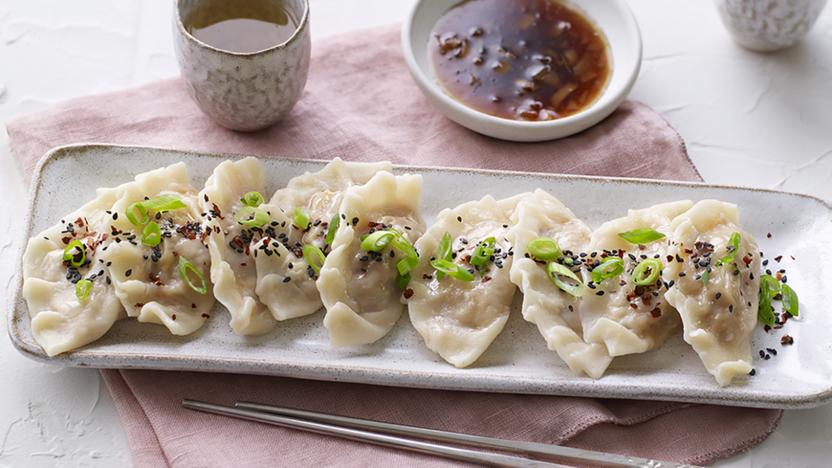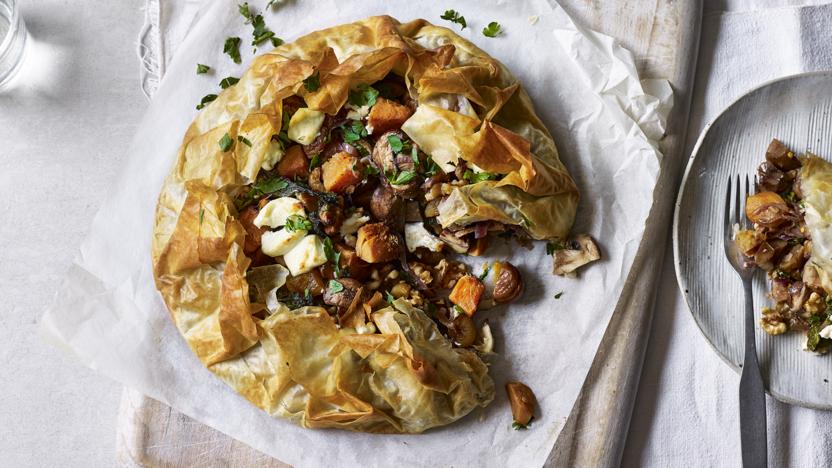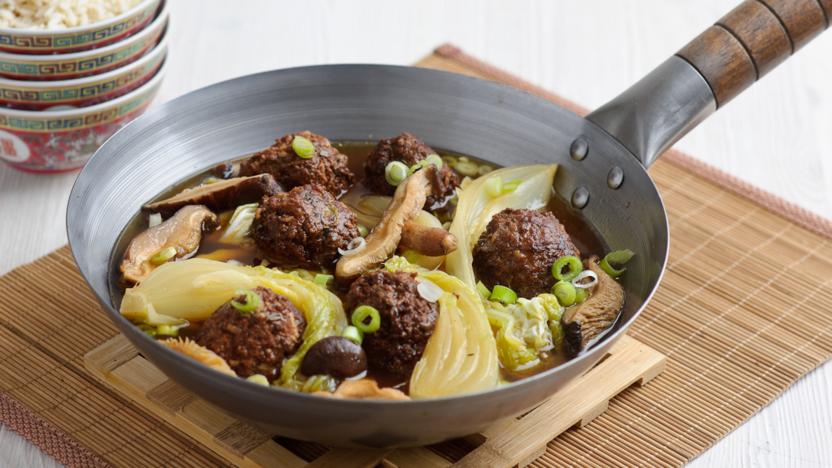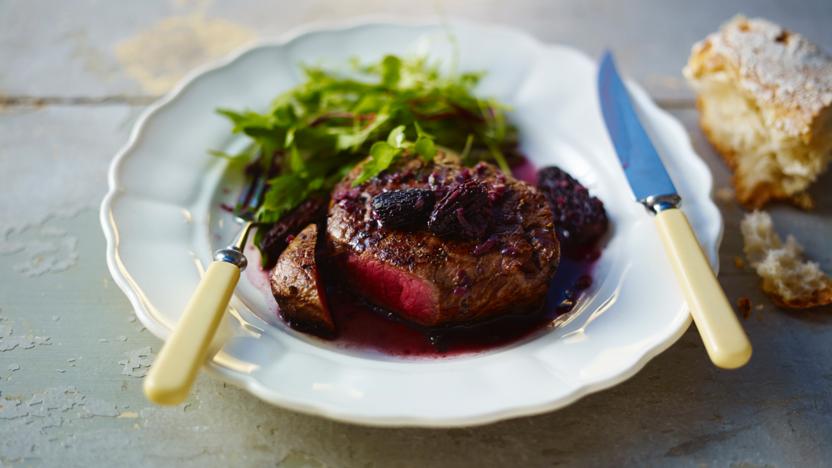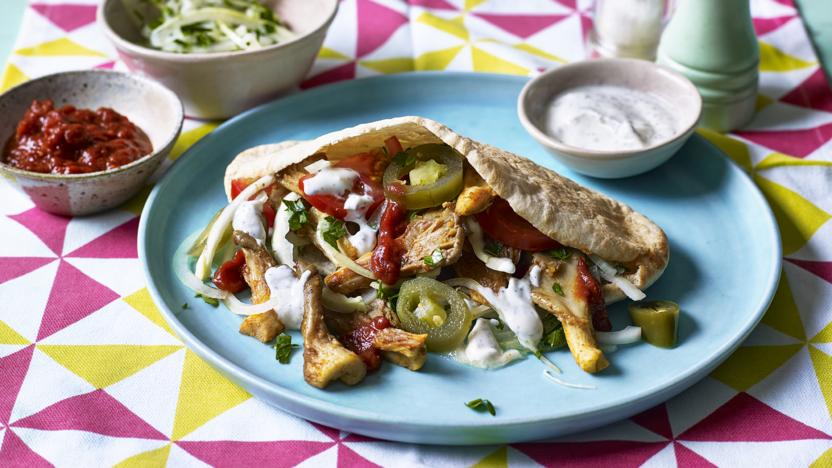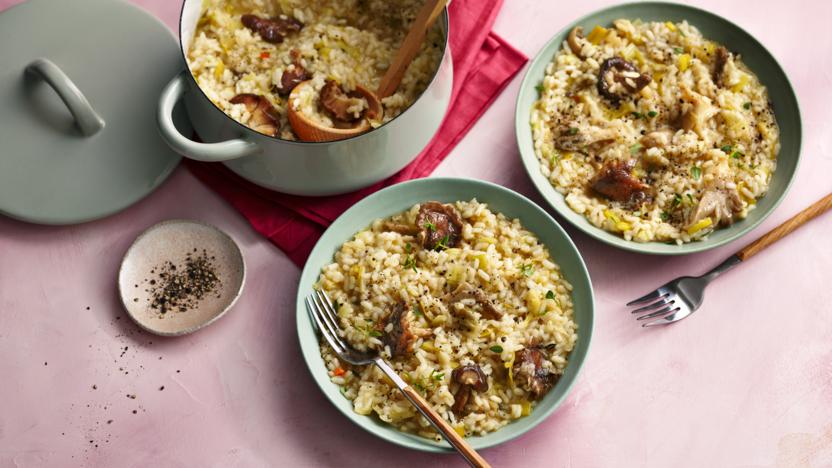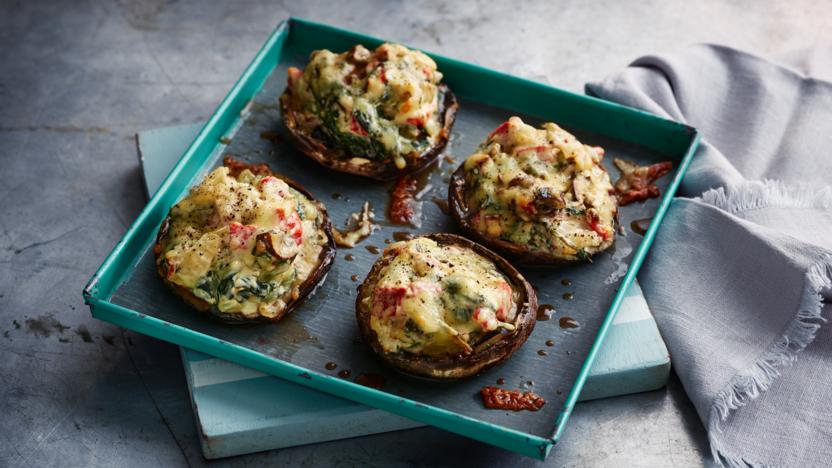Wild mushrooms recipes
Wild mushroom varieties abound, but most commonly you will encounter chanterelles, porcini (or ceps), horn-of-plenty (trompette de la mort), fairy ring, chicken of the woods, hedgehog, puffballs, morels and if you're really lucky, the odd truffle.
The secret to a perfect mushroom risotto is keeping a creamy, almost soupy texture at the end, and not over-cooking it to stodge. Feel free to use a mix of mushrooms depending on what's available. Wild mushrooms have a more distinctive flavour, but cultivated chestnut or portobello mushrooms are still very good.
More wild mushrooms recipes
Buyer's guide
If you're keen to try your hand at foraging, wild mushrooms grow throughout the year, but autumn offers the most abundant and varied seasonal eating. From late summer until the first frost, you can gather the likes of penny buns, chanterelles, field mushrooms and dozens of other varieties, many fit for the cooking pot, from Britain's forests and fields.
Mushroom foraging safety tips
Never eat any fungus that you are not absolutely certain has been identified correctly. Use a good field guide, but don't rely absolutely on pictures in books - differences between fungi can be difficult to spot. Go out with an experienced guide.
When collecting fungi, avoid using plastic bags; the lack of air will accelerate the decomposition process and make the mushrooms mushy. Use a basket instead.
When trying any fungus for the first time, only eat it in small amounts to make sure the body can cope with it.
Keep a small fresh portion of any mushroom you eat in the fridge. That way, if there is a reaction, you can easily identify the source.
Storage
Store wild mushrooms in the fridge in moisture-absorbent paper so that they do not acquire a wet surface that causes them to spoil rapidly. However, all mushrooms are best eaten as soon as they are picked.
Dried wild mushrooms have an exceptionally concentrated flavour and can be kept for months in an air-tight container.
Preparation
You can use a soft brush or a damp cloth to remove any debris and use a sharp knife to cut away damaged or soiled bits and to cut off tough stems. (Washing them will not really cause much damage if you are cooking them immediately.) Some recommend separating stalks and stems and quartering the caps to ensure there is no infestation. Once they're prepared, mushrooms should be cooked and eaten as soon as possible.
Wild mushrooms are wonderfully versatile and can be used in soups, risottos, stuffings, sauces, etc. Perhaps the simplest and most enjoyable method of consumption is to fry them well in butter and eat with good toast.
